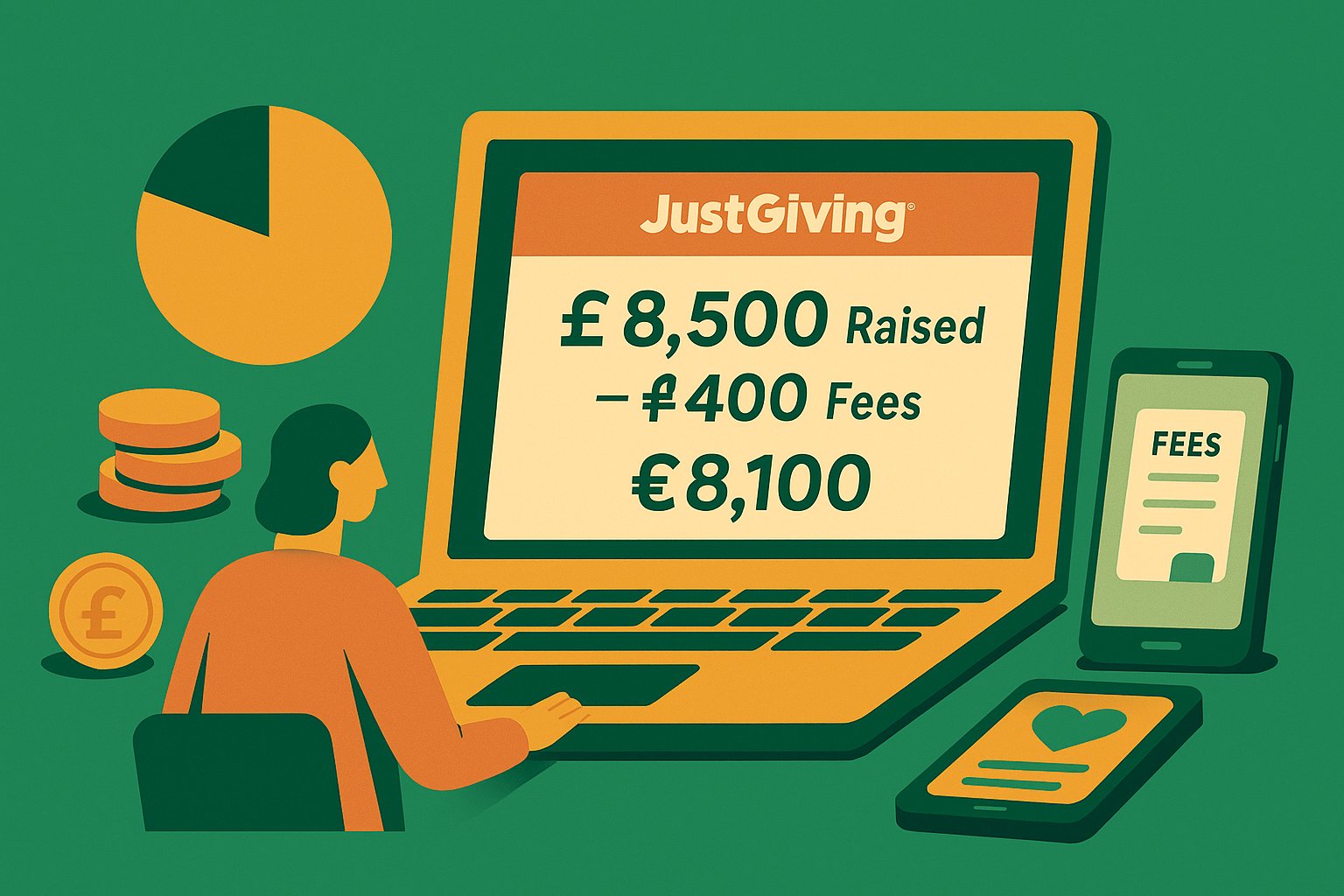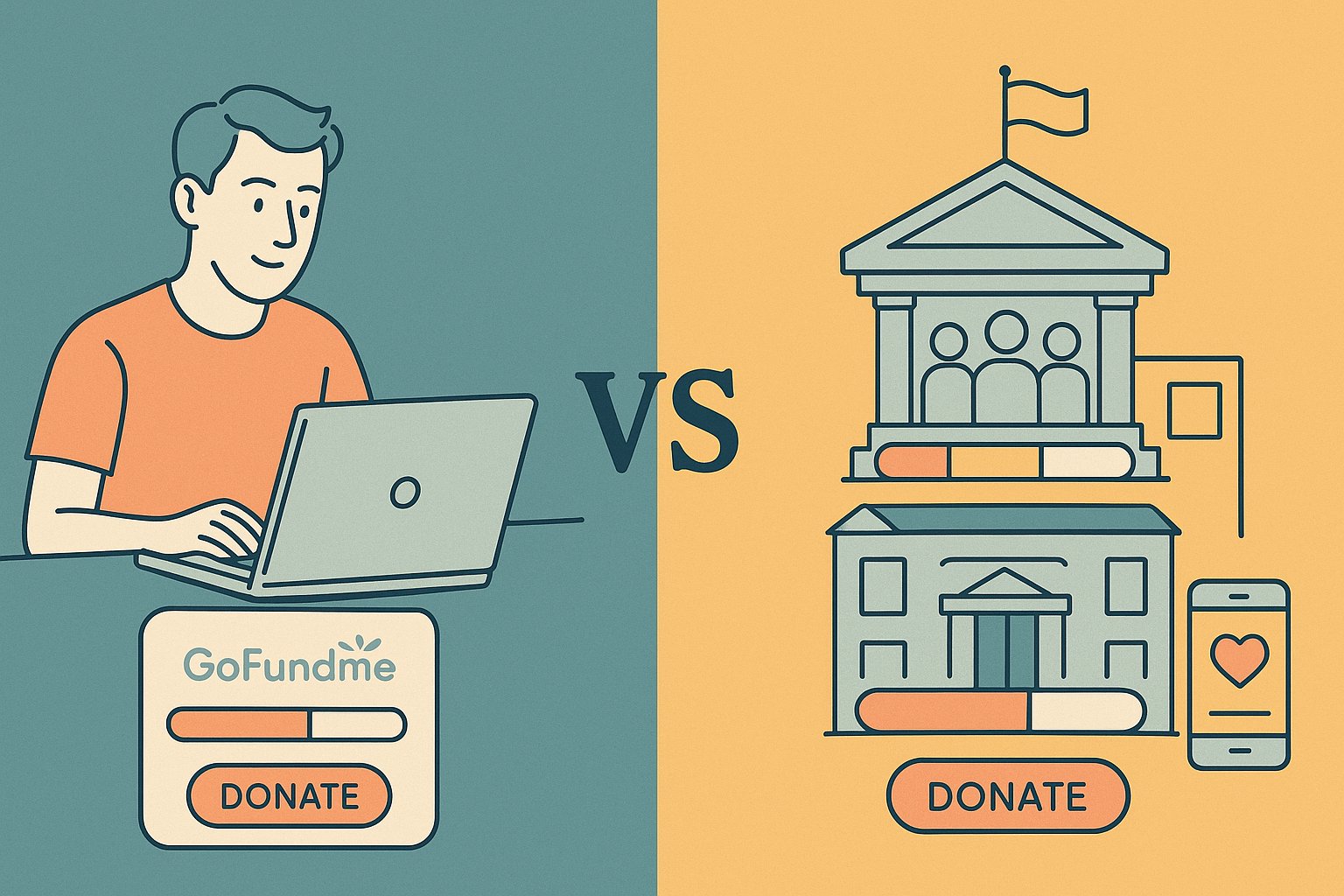Unveiling Your True Fundraising Potential
When you set out to raise money for a worthy cause—whether a charity initiative, a community project, or a personal challenge—JustGiving often tops the list of preferred platforms. Its reputation for ease of use and global reach makes it an attractive choice. But beneath the excitement of hitting your fundraising target lies an equally important question: how much of the money pledged will you actually receive? Understanding the JustGiving fee structure is the key to estimating your net proceeds and crafting a fundraising strategy that maximizes every donation. In this comprehensive guide, we’ll explore the various fees, deductions, and optional contributions that influence your final take-home amount.
Decoding JustGiving’s Basic Fee Framework
When you launch a fundraising page on JustGiving, you’ll encounter two main categories of fees: platform fees and payment processing fees. The platform fee, often referred to simply as the “JustGiving fee,” is a percentage levied against each donation. Historically, the default platform fee hovered around 5%, though charities and fundraisers sometimes have the option to reduce this by asking donors to cover the platform cost themselves. Payment processing fees, on the other hand, cover the cost of handling credit and debit card transactions. In the United Kingdom, for example, processing fees typically amount to around 1.9% plus a small fixed amount (e.g., £0.20), though they can vary slightly depending on the region and payment method used.
At this foundational level, you can approximate your net proceeds by subtracting platform and processing fees from the gross donation amount. For instance, on a £100 donation with a 5% platform fee (£5) and a 1.9% processing fee (£1.90 plus £0.20 = £2.10), you’d retain £92.90. While these percentages may seem modest on paper, they compound quickly as your total fundraising pot grows. Keeping a watchful eye on these charges and understanding how they apply to each donation is the first step toward accurately forecasting how much you’ll actually raise.
Illuminating Payment Processing Fees
Payment processing fees arise because JustGiving relies on third-party payment processors—like Stripe or GoCardless—to securely handle every card transaction. These fees typically break down into a percentage of the transaction value plus a fixed amount. In the UK, as of early 2025, most debit and credit card transactions incur a 1.9% processing fee, plus a flat £0.20 charge. Other regions have similar, though sometimes slightly higher, rates: for example, in the United States, payment processing often totals 2.9% plus a $0.30 fixed fee per transaction.
These charges exist to cover the costs of fraud prevention, secure data encryption, and compliance with banking regulations. Because processing fees are non-negotiable, fundraisers must factor them into their projections from the outset. For example, if you anticipate raising £50,000 on JustGiving, roughly 1.9% of that (£950) plus £0.20 per donation might disappear in processing charges. If you receive 1,000 individual gifts, that fixed £0.20 per donation alone totals £200—on top of the £950 percentage-based fee. Taken together, you could see nearly £1,150 deducted solely for processing. By anticipating these costs, you can set a realistic fundraising goal that accounts for the amounts you’ll lose to card handling fees.
The Platform Fee: A Percentage That Matters
Beyond processing charges lies the platform fee—the percentage cut that JustGiving takes for providing its service. For most charity fundraisers within the UK, this fee defaults to 5%. If you’re raising money for a registered charity, that 5% fee covers page hosting, customer support, site maintenance, and promotional tools. For personal causes or non-registered organizations, JustGiving typically recommends—or even requires—using its sister charity arm, JustGiving Charity, to access reduced fees. In some instances, registered charities can opt to ask donors to “cover the fee” at checkout, effectively shifting the 5% platform fee onto willing supporters.
Although 5% may appear small, the cumulative effect across thousands of donations can be significant. On a £10,000 campaign, for example, a 5% fee amounts to £500 in platform charges. Combined with processing fees, total deductions could approach £700 or more. If your campaign’s messaging includes an explicit ask—“please cover the 5% platform fee to ensure 100% of your donation goes to our cause”—then some donors elect to donate that extra amount. However, not every supporter will agree to cover platform fees, so you must remain prepared to absorb that 5% as part of your standard fundraising costs.
Suggested Donations and Optional Fee Coverage
In recent years, JustGiving has refined its approach to platform fees by offering donors the option to cover these costs at checkout. When someone enters their payment details, a check box appears, inviting them to add a small amount that offsets the 5% platform fee and processing charges. This optional “tip” or “fee coverage” ensures fundraisers have a clearer path to receiving the entire donation amount without out-of-pocket fees.
The success of this feature depends on donor willingness. Many supporters appreciate knowing they can contribute an additional sum to ensure their gift goes further. Campaign pages that clearly explain the terminology—using phrases like “cover JustGiving’s costs” or “help us receive the full amount”—see higher opt-in rates. If half of your donors cover the platform fee, you effectively halve those 5% deductions, significantly boosting your net proceeds. Yet, even when donors do cover fees, processing charges (like the 1.9% + £0.20 example) still apply unless explicitly covered in that optional amount. To plan effectively, calculate both the average transaction size and the percentage of donors likely to cover fees; those statistics will inform how much you’ll need to raise to hit your true goal.
Gift Aid: A Generous Top-Up for UK Charities
For UK-registered charities and fundraisers, Gift Aid is a powerful tool that increases the value of every donation by 25%, without extra cost to the donor. When donors who pay UK Income Tax or Capital Gains Tax tick the Gift Aid box on your JustGiving page, HM Revenue & Customs (HMRC) refunds that 25% on top of their donation, pumping an additional revenue stream into your campaign. As a simple example, a £20 donation under Gift Aid becomes £25 once the reclaimed tax is applied.
However, Gift Aid only applies if (a) the fundraiser is a registered charity, (b) the donor is a UK taxpayer, and (c) the donor’s gift meets eligibility criteria. JustGiving streamlines Gift Aid claims by automatically batching and submitting donor data to HMRC on your behalf. While this service does not deduct any fee, charities must still account for the time and administrative effort required to audit, validate, and correct donor declarations. Furthermore, Gift Aid does not stack against platform or processing fees; it simply augments the original donation. Thus, in analyzing your net raise, you’ll subtract fees from the original gift and then add the Gift Aid amount afterward, effectively maximizing your total funds.
Navigating Regional and Currency Variations
JustGiving’s fee structure varies depending on geographic location and the currency used. While UK fundraisers typically pay 5% plus 1.9% processing fees, campaigns run in other countries—Australia, Canada, or continental Europe—may face slightly different rates. In Australia, for instance, processing fees might be around 2.4% plus AUD 0.30 per transaction, while platform fees can vary between 5% and 7% depending on how the campaign is registered. In Canada, you may encounter a 3.9% processing fee plus CAD 0.30 and a platform fee of approximately 5%.
Additionally, currency conversion costs can affect international campaigns. If donors give in Euros (EUR) but your charity’s bank account is in British Pounds (GBP), exchange rates and conversion fees apply. JustGiving uses mid-market rates but may add a 1%–3% currency spread, reducing the converted value once the gift arrives in your account. To estimate net proceeds accurately, fundraisers running cross-border campaigns should consult JustGiving’s local fee schedule and check prevailing exchange rates. It’s crucial to communicate these nuances to donors if you’re accepting multiple currencies—clarity prevents confusion when a €50 gift becomes slightly less after conversion and processing.
Comparing JustGiving to Alternative Platforms
As you explore net fundraising potential, it’s useful to benchmark JustGiving’s fees against those of competitor platforms. In the UK, platforms like Virgin Money Giving historically charged 1.5% of each donation, plus card processing fees—lower than JustGiving’s 5% platform fee. However, Virgin Money Giving shut down in 2019, driving many charities to JustGiving despite its higher fee. Other platforms like Facebook Fundraisers charge no platform fee, relying solely on processing fees, while Stripe’s direct donation integrations carry around 2.2% + £0.20 for charities.
Crowdfunding giants like GoFundMe in the US state that they charge no platform fee for personal fundraisers but still deduct a 2.9% + $0.30 processing fee. By contrast, JustGiving’s fixed 5% platform charge can seem steep if you compare it head-to-head. But JustGiving tends to offer more robust charity management tools—Gift Aid integration, recurring donation features, and donor spreadsheets—benefits that may outweigh the additional cost, especially for larger campaigns. When deciding where to host your fundraiser, weigh both the net proceeds and the platform’s feature set. A slightly higher fee may translate to more efficient fundraising and richer donor data in the long run.
Strategies to Maximize Your Take-Home Dollars
Given the fees you’ll encounter on JustGiving, devising strategies to optimize your net raise is crucial. First, explicitly ask donors to cover fees. Many campaign pages include a brief note—“If you’re able, please select ‘Cover JustGiving’s fees’ at checkout to help us receive the full benefit of your gift”—which increases fee-coverage rates. Second, segment your donor communications: ask major donors (e.g., those giving £500 or more) to commit to covering fees, while allowing smaller supporters to decline that option.
Third, leverage Gift Aid to its fullest. Encourage UK donors to complete their Gift Aid declaration by clearly explaining its impact (e.g., “Your £10 becomes £12.50 at no extra cost!”). Monitor your Gift Aid reconciliation reports in JustGiving, and promptly correct any missing donor details to ensure maximum tax reclaim. Fourth, minimize the number of transactions by setting suggested higher donation amounts. A campaign with many £5 gifts—each incurring fixed fees—will lose more to the £0.20 per-transaction charge than a smaller number of £50 donations.
Fifth, consider international donation funnels carefully. If you expect significant overseas support, set up multiple currency pages to reduce conversion fees. For example, run separate campaigns in GBP, EUR, and USD so that local donors give in their native currency. Finally, take advantage of any promotional periods. JustGiving occasionally waives platform fees on special giving days or for matching gift campaigns; keep an eye on their announcements to time major fundraising pushes accordingly.
Transparency: Building Donor Trust Around Fees
An often-overlooked element of net fundraising success is donor trust. When supporters see that you’re transparent about fees and how you’re maximizing their contributions, they feel more confident and invested. On your JustGiving page, include a brief breakdown—“We pay a 5% platform fee and a 1.9% processing fee on every donation. If you choose to cover these fees, 100% of your gift goes to our cause.” This upfront honesty signals integrity and can prompt more donors to click the “Cover Fees” checkbox without feeling obliged.
Additionally, clarify how Gift Aid influences total contributions: “Every gift from UK taxpayers can be increased by 25% at no extra cost.” Include an FAQ section under your campaign description to address common fee questions. By proactively addressing potential donor concerns, you reduce friction at checkout and minimize abandoned donations due to uncertainty. Remember, when donors perceive that you respect their generosity enough to lay out all fee details, they become more likely to support you enthusiastically and share your campaign within their networks.
Monitoring and Projecting Net Proceeds
As donations come in, it’s essential to track both gross and net figures in real time. JustGiving’s dashboard provides a breakdown of total funds raised and the deductions taken for platform and processing fees. By exporting these reports, you can create a simple spreadsheet that outlines each donation, the associated fees, and the net amount received. Regularly review this data—week by week or even day by day during peak fundraising—to assess whether your projections align with reality. If you notice higher-than-expected deductions (perhaps because fewer donors opted to cover fees), adjust your messaging or target accordingly. Accurate, continuous monitoring ensures you remain agile: if you foresee a shortfall, you can launch a last-minute matching challenge or social media blitz to bridge the gap.
Looking Ahead: Adapting to JustGiving’s Evolving Fee Landscape
JustGiving periodically updates its fee structures and terms of service in response to market changes and competitor pressures. Although the 5% platform fee and 1.9% processing fee remain common in early 2025, it’s prudent to stay informed about any modifications. Sign up for JustGiving’s newsletter, follow its blog, and monitor communications from your JustGiving account manager if you represent a registered charity. Changes may include reduced fees for certain fundraising categories—like educational initiatives or environmental projects—or new incentives during global giving days. Similarly, watch for enhancements to JustGiving’s donor tools, such as advanced recurring donation features or deeper integrations with donor CRMs, which may influence your long-term fundraising strategy. By keeping a finger on the pulse of these developments, you ensure that your fee projections remain accurate and your fundraising strategies remain cutting-edge.
Concluding Thoughts: Maximizing Your Fundraising Success
When you calculate your JustGiving net raise, the headline goal is only part of the story. Delve deeper into the numbers by accounting for platform fees, payment processing charges, and the impact of Gift Aid before celebrating that “goal achieved” moment. By understanding each layer of cost—platform percentages, fixed transaction fees, currency conversions, and optional donor-covered fees—you gain a realistic picture of how much money will actually reach your cause. From that foundation, you can craft targeted strategies—such as encouraging fee coverage, optimizing donation levels, and leveraging regional giving days—to close any gaps between gross pledges and net proceeds.
Ultimately, transparent communication and proactive donor engagement remain your most powerful allies. When supporters see that you respect their generosity, are upfront about fees, and work tirelessly to minimize deductions, they become even more enthusiastic advocates. With these insights into JustGiving’s fee structure and smart fundraising tactics, you’re equipped to set an ambitious target, navigate fees with confidence, and move closer to making your mission a reality—while ensuring that as much of every gift as possible goes directly toward the impact you seek to create.




